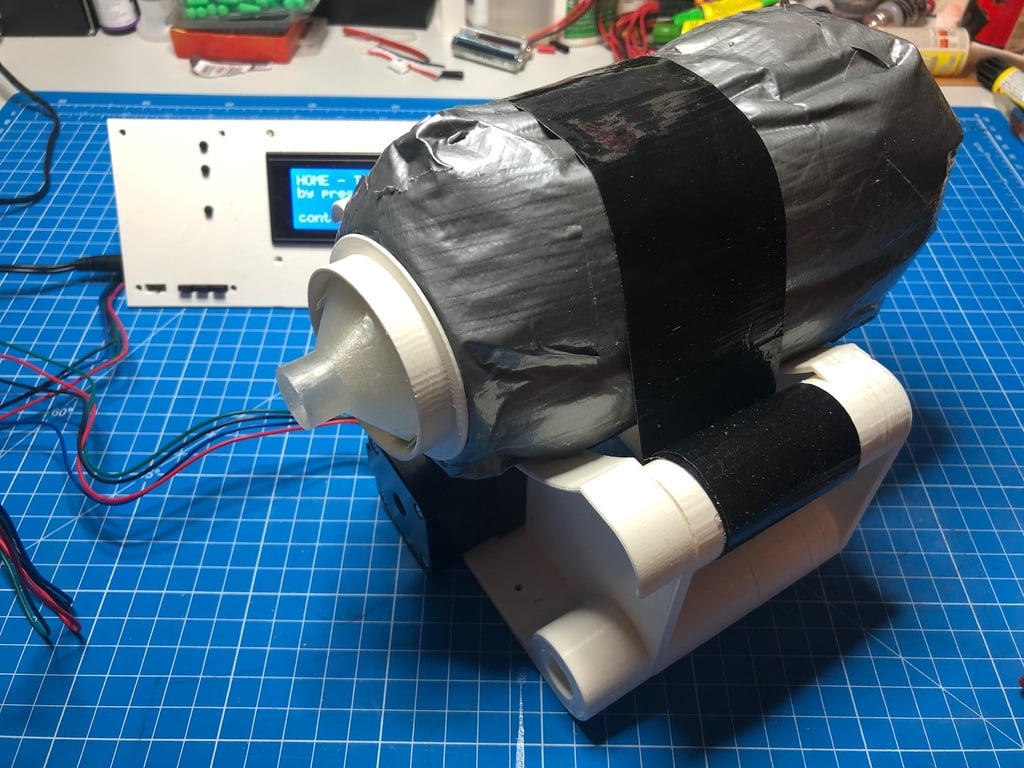
OpenVent - 3D printable BVM Ventilator, Design A0
thingiverse
During the COVID-19 pandemic, it became clear that a shortage of medical equipment can have a devastating impact. In many cases, simple devices and designs can be incredibly helpful when professional equipment is not readily available. This repository contains general information about an open-source ventilator device. The primary goal of this project is to create a ventilator using easy-to-assemble components when no professional or medical equipment is available. The focus is on simplicity, availability, and scalability. This project started as part of the #WirvsVirus hackathon organized by the German government. Please review the full disclaimer carefully before proceeding: The materials and documentation provided here are offered without any explicit or implicit warranties. No material on this site is intended to provide medical advice. All designs are intended for experimental use only. This website does not represent any official policies or procedures. The project is provided "as is," without warranty of any kind, express or implied, including but not limited to the warranties of merchantability, fitness for a particular purpose, and non-infringement. In no event shall the authors or copyright holders be liable for any claim, damages, or other liability, whether in an action of contract, tort, or otherwise, arising from, out of, or in connection with the software or the use or other dealings in the software. Only use this repository, designs, documentation, or any provided information if you agree to the above disclaimer. Additional discussion, documentation, source code, electronics, and sensor design are available on GitHub (https://github.com/mhollfelder/openvent) and YouTube (https://www.youtube.com/channel/UCw9h6QsYEKY2sfZIYBNuHvw). This is our initial functional design. Extensions and upgrades will be posted here as well. Please check those too. General Concept An AMBU bag is used as a pressure reservoir, featuring an O2 inlet (O2 concentration is crucial for patients with acute respiratory syndrome) and several safety features, including overpressure and bypass valves. These bags are widely available in substantial quantities. A motorized and microcontroller+sensor controlled setup squeezes the bag at the right pattern, supporting assist-, pressure-, volume- and flow-control ventilation and exhaled gas measurements and filters. All components are based on open-source and commonly accessible parts; especially for the mechanics, the objective is to be scalable in production and fully 3D-printable. The motor and its screws as well as the belt are not printed. Standard stepper motors such as Nema17 or 23 are proposed. Electronics, sensors, and software are covered on our GitHub pages. Experiences This design has proven to be very robust while simple in design, perfectly printable in a single print job on machines with less than 20cmx20cm build area in less than 10 hours at 0.2mm layer resolution. Robustness takes priority over printing time; however, such high resolution is not required for the design, providing additional speed-up potential. On the downside, this design is not ideal for minimizing the required motor force, which would widen the choice of motors and lower the operating temperature, beneficial for use of cheap and widely available materials, including PLA. More detailed discussions can be found on our GitHub pages.
With this file you will be able to print OpenVent - 3D printable BVM Ventilator, Design A0 with your 3D printer. Click on the button and save the file on your computer to work, edit or customize your design. You can also find more 3D designs for printers on OpenVent - 3D printable BVM Ventilator, Design A0.
